UDISE+ 2023-24 Dire condition of world’s largest child population
The Unified District Information System Plus Report 2023-24 provides a vast volume of data relating to primary, secondary and higher secondary schools. Yet infrastructure deficiency, child drop-out and retention data project a disturbing picture – Dilip Thakore
The Unified District Information System for Education Plus (UDISE+) Report 2023-24 was released in Delhi on December 30. The report provides a vast volume of data related to K-12 education — number of primary, secondary, higher secondary schools; number of children enrolled in each segment; number of drop-outs; institutional infrastructure installed; number of teachers and related information. “It aims to provide accurate and updated information about schools across the country,” says the website of the Union education ministry.
This objective of the education ministry has been substantially fulfilled by the 187-page UDISE+ 2023-24. The ministry deserves praise and thanks from the citizenry for providing a wealth of up-to-date data about India’s K-12 education system.
Nor is this a mere statistical exercise. As the ministry’s website — alas, Union education minister Dharmendra Pradhan has set his face against granting any interview to EducationWorld for meaningful debate on priorities and policies relating to development of the country’s abundant but neglected human resource — says “information collected through the digital platform of UDISE+, is utilised for the planning, optimised resource allocation and implementation of various education-related programs and assessments of progress made” in K-12 education countrywide. Moreover, ‘‘with effect from UDISE+ 2022-23, data fields are completely aligned with the recommendations of NEP (National Education Policy) 2020.”
Therefore, the labour of love invested in compiling the data-rich UDISE+ 2023-24 report is praiseworthy inasmuch as it serves as a bedrock document for analysis and debate on ways and means to improve primary-secondary education and bring it on a par with the best school systems worldwide. In the pages following, we examine this valuable report which hides as much as it reveals.
First, the good news. According to UDISE+ 2023-24, in terms of infrastructure facilities, there’s been marked improvement especially of government schools since 1998 when the independent PROBE (Public Report on Basic Education) first jolted the establishment and middle class India by highlighting the pathetic infrastructure inadequacies of government rural schools. According to UDISE+ 2023-24, 98 percent of the country’s 1.47 million schools with an aggregate enrolment of 248 million children and 9.8 million teachers are equipped with drinking water; 97 percent with separate toilets for girl children; 95 percent with hands-washing facility and 92 percent with electricity; 89 percent with libraries and 82 percent with playgrounds (see chart 1, p.39).
Similarly, ex facie primary, upper primary, secondary, if not higher secondary GER (gross enrolment ratio) data presented in UDISE+ 2023-24 is reassuring. Eighteen of India’s 28 states and 8 Union territories indicate GER in excess of 100 percent of children in classes I-V (age group 6-10). This is explained as “GER greater than 100 percent might indicate presence of over or under-age children in a particular level of education, inter-state migration etc.” Likewise, the GER in upper primary classes VI-VIII (ages 11-13) in 17 states and UTs countrywide exceeds 100 percent. In secondary school (classes IX-X) GER exceeding 100 percent drops to 7 states and UTs and in higher secondary to only one (Chandigarh).
Although mysteriously, GER averages are not provided, child dropout and retention data project a less reassuring picture. In 2023-24, 22 percent of children in elementary education (class I-VIII) dropped out of school; 36.2 percent dropped out of secondary school and 54.4 percent out of higher secondary education. This data set presages either deep households poverty forcing children into child labour, or pervasive disillusionment with the country’s public (government) schools numbering 1.01 million attended by children from over 200 million poor households. It can be safely assumed that children from the remaining 60 million middle and upper class households rarely drop out of school.
This data perhaps unwittingly provided by the Union education ministry in UDISE+ 2023-24, indicates wastage of human resource on vast scale. It’s also pertinent to note (as latest UDISE+ data indicates) that out of India’s 1.47 million primary-secondary schools, a mere 18,610 provide “vocational education under NSQF (National Skills Qualifications Framework)”.
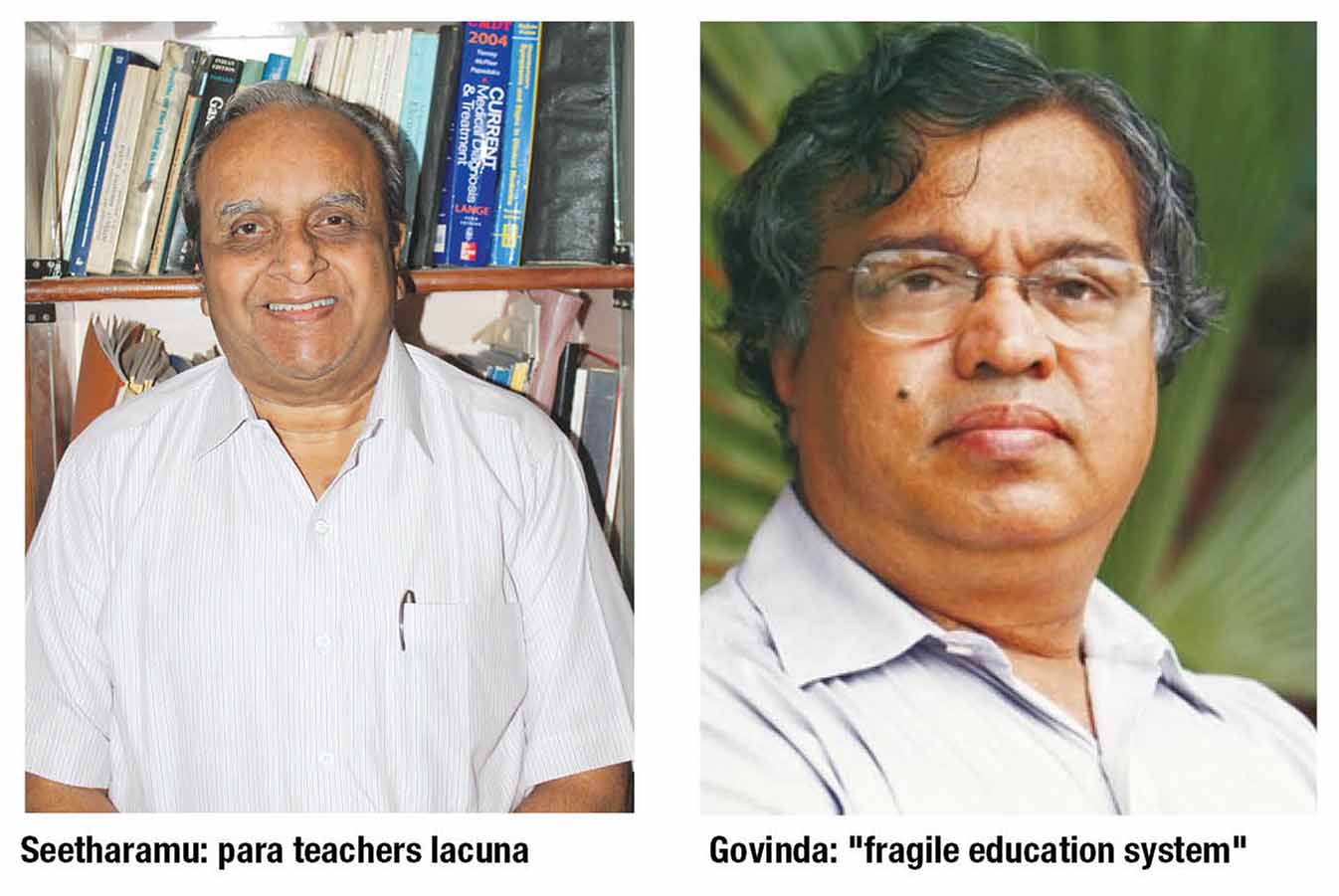 “U-DISE is the only large-scale real time data on school education available in India for monitoring, reviewing, planning and implementing school education policy at all levels. However, it has several limitations which need to be corrected in the public interest. First, UDISE is silent on two key issues of children’s schooling — ECCE (early childhood care and education) and OOSC (out of school children). Secondly, the data provided on teachers is unreliable. According to UDISE+ 2023-24, the school system is served by 9.8 million teachers. But it fails to disclose that in some states, nearly 50 percent of teachers are ‘para-teachers’ — individuals engaged under bilateral contracts whose qualifications and training defies all norms of the RTE Act, 2009. Para-teachers are employed by several state governments and budget private schools and paid 20-25 percent salaries mandated for government school teachers as per Pay Commission prescribed scales. This may well be the cause of large numbers of children dropping out of the school system. Finally and critically, UDISE is completely silent on the learning outcomes of children in India’s 1.47 million schools. In the circumstances, one wonders whether the fundamental right conferred upon all children in the age group 6-14 by the RTE Act, 2009 is a right to learning or schooling,” comments Dr. A.S. Seetharamu, the erudite former professor of education at the Institute for Social and Economic Change (ISEC), Bengaluru and education advisor to the Karnataka state government.
“U-DISE is the only large-scale real time data on school education available in India for monitoring, reviewing, planning and implementing school education policy at all levels. However, it has several limitations which need to be corrected in the public interest. First, UDISE is silent on two key issues of children’s schooling — ECCE (early childhood care and education) and OOSC (out of school children). Secondly, the data provided on teachers is unreliable. According to UDISE+ 2023-24, the school system is served by 9.8 million teachers. But it fails to disclose that in some states, nearly 50 percent of teachers are ‘para-teachers’ — individuals engaged under bilateral contracts whose qualifications and training defies all norms of the RTE Act, 2009. Para-teachers are employed by several state governments and budget private schools and paid 20-25 percent salaries mandated for government school teachers as per Pay Commission prescribed scales. This may well be the cause of large numbers of children dropping out of the school system. Finally and critically, UDISE is completely silent on the learning outcomes of children in India’s 1.47 million schools. In the circumstances, one wonders whether the fundamental right conferred upon all children in the age group 6-14 by the RTE Act, 2009 is a right to learning or schooling,” comments Dr. A.S. Seetharamu, the erudite former professor of education at the Institute for Social and Economic Change (ISEC), Bengaluru and education advisor to the Karnataka state government.
Prof. Seetharamu’s observations on the lacunae of UDISE+ 2023-24 deserve careful consideration by the Union education ministry and educationists countrywide. Undoubtedly, UDISE freely and frankly provides a wealth of reassuring information relating to school infrastructure and GER in primary-secondary education. Yet the report’s failure to include data relating to critically important pre-primary early childhood care and education (ECCE) under the plea that the country’s 1.6 million “Anganwadi Centres and standalone pre-primary education centres run by different kindergartens” fall within the administrative purview of the Union ministry of women and child welfare, is a major deficiency.
As acknowledged by NEP 2020, ECCE is vitally important to prepare children for formal schooling as children’s cognitive capabilities are 80 percent developed by the time they attain age eight. This belated awareness of the education establishment (despite EducationWorld convening an international ECCE seminar in 2010 and staging national seminars annually thereafter, and also introducing its annual preschool rankings the same year) prompted NEP 2020 to restructure the vintage 10+2 schooling system into the new 5+3+3+4 system by tagging on three years of mandatory formal ECCE to the school education system.
In the circumstances, it’s a major lacuna of UDISE+ 2023-24 that it fails to provide critical ECCE data. Moreover although the report provides data on the number of digitalised libraries, functional electricity, and functional lavatories, alarming anecdotal stories of children countrywide being deprived of these essential facilities generates doubts about the inspection system and data credibility, particularly in light of the high numbers of children dropping out of primary, secondary and higher secondary education (see chart II p.40).
Dr. R. Govinda, currently J.P. Naik National Fellow for Studies in Education and Culture at the Indian Council for Social Development, Delhi, former Vice Chancellor at the National University of Educational Planning and Administration (NUEPA), Delhi and former visiting professor at the Institute of Education, University of London, and International Institute of Educational Planning, Unesco, Paris, is also unimpressed by the upbeat tone and data provided by UDISE+ 2023-24, and reported progress in primary-secondary education.
“For a start, the school infrastructure norms prescribed by s.19 and the Schedule of the RTE Act are bare minimum by global standards. Despite this some large states are way behind in meeting these minimum standards. The plain truth is that we have a very fragile education system in 21st century India, with at best only 1 lakh schools out of 1.47 million comparable internationally. Moreover, the dropout data in UDISE reports is misleading as it only indicates the number of school dropouts in one year. It is not the compounded dropouts rate which, according to the NSS (National Sample Survey) is over 25 percent. UDISE+ 2023-224 itself reports that thousands of schools in most states of the country don’t have functional computers, internet connectivity, functional separate toilets for girl children and ramps and hand rails for special needs children. Unfortunately, very few educationists believe the data published in UDISE reports and the self-congratulatory tone of UDISE and other government reports is unwarranted. The reality is that government spending on education in real terms is declining year-by-year and the learning outcomes gap between the West and even Bhutan, let alone China, and India is widening year-by-year. We have to substantially increase our expenditure on education, especially foundational and primary education,” says Govinda, whose latest book Primary Education in India: From Compulsion to Fundamental Right (Routledge) was released last August.
The introduction of UDISE+ 2023-24 trumpets India’s K-12 education system as “one of the largest in the world with nearly 14.72 lakh (1.47 million) schools, 98 lakh (9.8 million) teachers and 24.8 crore (248 million) students… which strives to maintain standards and uniformity across the country while giving ample scope for the country’s diverse culture and heritage to grow and flourish”. Yet there is no dearth of evidence that the country’s education system has been severely damaged by consistent under-funding, reckless political interference from Central and state bureaucrats who have sidelined educationists. As indicated above, UDISE+ 2023-24 itself perhaps unwittingly furbishes considerable evidence of shocking neglect of India’s huge and high-potential human resource.
For instance, the high percentage of children not completing primary, secondary and higher secondary school; the almost utter neglect of vocational education; nearly 10 percent (140,000) schools without electricity; 11 percent (161,700) without libraries; 57 percent (837,900) without computer facility; and 54 percent (793,800) without internet connectivity. This latter deficiency in the new age of AI provoked an anguished editorial in the Times of India (January 2).
 Although ex facie, the national infrastructure provision data provided by UDISE+ 2023-24 proclaims national progress — 98.3 percent of schools equipped with drinking water; 97.2 percent with separate girls toilets; 92 percent with electricity etc — examination of school infrastructure in India’s most populous states presents a dismaying picture.
Although ex facie, the national infrastructure provision data provided by UDISE+ 2023-24 proclaims national progress — 98.3 percent of schools equipped with drinking water; 97.2 percent with separate girls toilets; 92 percent with electricity etc — examination of school infrastructure in India’s most populous states presents a dismaying picture.
For instance in Uttar Pradesh (pop.244 million), of the state’s 255,087 schools, a mere 86,115 (33.7 percent) have functional computers for pedagogical purposes; only 4,547 have digitally equipped libraries; 39,012 schools are deprived functional electricity and 12,792 lack functional toilets for girl children.
In the notoriously lawless and socio-economically backward state of Bihar (pop.132 million), of the total number of 94,686 K-12 schools, only 17,465 (18 percent) have functional computers for pedagogical purposes; a mere 1,214 have digitally equipped libraries; 45,836 (48.4 percent) lack functional electricity and 7,415 don’t have separate girls’ toilets. Other Hindi-belt BIMARU (Bihar, Madhya Pradesh, Rajasthan and Uttar Pradesh) states have only slightly better school infrastructure.
With eager-to-learn children in the country’s most populous states deprived of foundational learning on this massive scale, it’s hardly surprising that productivity in Indian agriculture, business and governance is among the lowest worldwide. In this connection, it’s perhaps pertinent to note that the largest number of IAS, IPS and IRS officers of the Union government is drawn from BIMARU states.
Persistent under-investment and negligent governance in early childhood and primary-secondary education resulting in crumbling, shabby infrastructure, is compounded by pervasive teacher truancy (an estimated 25 percent, i.e, 1.25 million, government school teachers are absent every day). This necessitates multi-grade teaching-learning in single classrooms. Moreover with government schools transformed into high wage islands, there are scandals galore in teacher selection and appointments countrywide.
All this translates into poor learning outcomes for the great majority of contemporary India’s 248 million in-school children. According to the Annual Status of Education Report (ASER) 2022, of the highly-respected, independent Pratham Education Foundation (estb.1995), 28.9 percent of class VIII children in rural government and private primary/elementary schools couldn’t read class II textbooks in their native vernacular language when they were tested by Pratham volunteers (usually college/university students). In 2023, the percentage of class VIII students who could read a class II textbook was static at 29 percent, and only 45.8 percent of them could solve simple division sums.
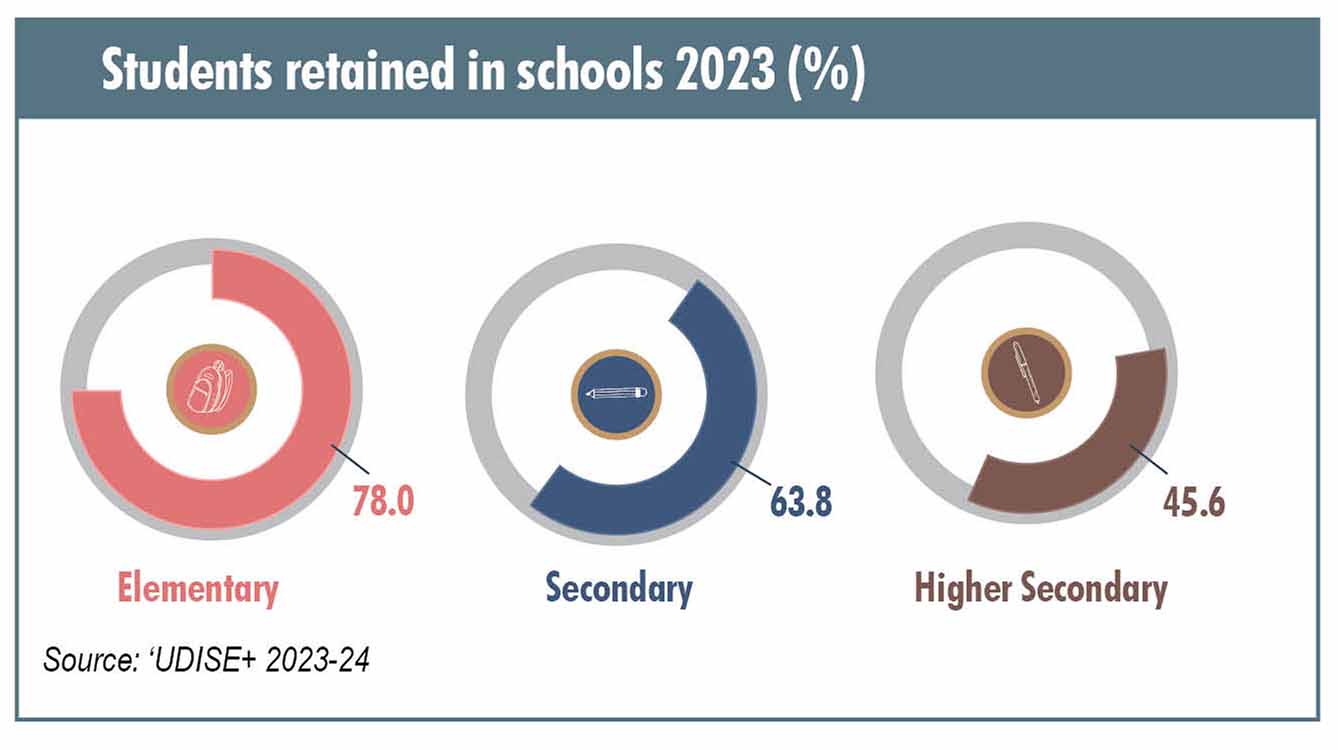 In-school children’s learning outcomes measured by NCERT (National Council for Education Research & Training) — an autonomous subsidiary of the Union ministry of education which conducts an elaborate nationwide National Achievement Survey (NAS) measuring the learning outcomes of a representative sample of children in classes III, V, VIII and X every three years — are not reassuring either. In NAS 2021, 3.4 million children from 1.8 lakh schools countrywide were tested (objective answers methodology) by 2 lakh field investigators and 1.24 lakh observers in language, math and environment studies. Class III children averaged 59, class V students 49, class VIII children 41.9, and class X 37.8 (against the pass threshold of 50 percent).
In-school children’s learning outcomes measured by NCERT (National Council for Education Research & Training) — an autonomous subsidiary of the Union ministry of education which conducts an elaborate nationwide National Achievement Survey (NAS) measuring the learning outcomes of a representative sample of children in classes III, V, VIII and X every three years — are not reassuring either. In NAS 2021, 3.4 million children from 1.8 lakh schools countrywide were tested (objective answers methodology) by 2 lakh field investigators and 1.24 lakh observers in language, math and environment studies. Class III children averaged 59, class V students 49, class VIII children 41.9, and class X 37.8 (against the pass threshold of 50 percent).
Continuous under-investment and neglect of K-12 education, especially of 1 million government schools constitutionally obliged to provide acceptable quality education to children from the majority 90 percent of bottom-of-pyramid households, has disillusioned informed monitors of the education system.
 “Widespread skepticism within the academic community about UDISE reports is justified. After 2019, UDISE reports have stopped publishing comparative data stretching back ten years which would enable meaningful trend analysis. Nevertheless, there is considerable evidence indicating long-term monotonic decline of student numbers in government schools and a corresponding rise in private schools. As a result, there is a credibility problem with UDISE and other official reports which tend to give a positive spin obscuring a deep learning crisis within India’s school system. This is testified year after year by ASER and periodically by NCERT’s National Achievement Survey. The learning outcomes gap between children in India and developed industrial countries is widening. Since 2009 when a batch of 15-year-old selected students from Tamil Nadu and Himachal Pradesh — India’s most advanced states for K-12 education — wrote PISA (Program for International Student Assessment) and were ranked #73 out of 74 countries, the government has opted out of PISA. Poor curriculums, widespread cheating, corruption and dismal work culture in the overwhelming majority of India’s schools is certain to cost the country dearly in the near future,” warns Prof. Geeta Gandhi Kingdon, an alumna of Oxford University and the London School of Economics, chair of education economics and international development at University College London and incumbent President, City Montessori School, Lucknow, which has a massive enrolment of 62,000 students distributed over 15 campuses in Lucknow, and is routinely ranked Uttar Pradesh’s #1 co-ed day school in the annual EducationWorld India School Rankings.
“Widespread skepticism within the academic community about UDISE reports is justified. After 2019, UDISE reports have stopped publishing comparative data stretching back ten years which would enable meaningful trend analysis. Nevertheless, there is considerable evidence indicating long-term monotonic decline of student numbers in government schools and a corresponding rise in private schools. As a result, there is a credibility problem with UDISE and other official reports which tend to give a positive spin obscuring a deep learning crisis within India’s school system. This is testified year after year by ASER and periodically by NCERT’s National Achievement Survey. The learning outcomes gap between children in India and developed industrial countries is widening. Since 2009 when a batch of 15-year-old selected students from Tamil Nadu and Himachal Pradesh — India’s most advanced states for K-12 education — wrote PISA (Program for International Student Assessment) and were ranked #73 out of 74 countries, the government has opted out of PISA. Poor curriculums, widespread cheating, corruption and dismal work culture in the overwhelming majority of India’s schools is certain to cost the country dearly in the near future,” warns Prof. Geeta Gandhi Kingdon, an alumna of Oxford University and the London School of Economics, chair of education economics and international development at University College London and incumbent President, City Montessori School, Lucknow, which has a massive enrolment of 62,000 students distributed over 15 campuses in Lucknow, and is routinely ranked Uttar Pradesh’s #1 co-ed day school in the annual EducationWorld India School Rankings.
On closer reading, UDISE+ 2023-24 clearly reveals the glaring infrastructure deficit and mis-governance of the great majority of India’s 1.47 million schools constitutionally obliged to provide meaningful and enabling education to 248 million students, the world’s largest cohort of school-going children. Well-aware of this reality, ab initio your editors have been pressing for the annual outlay for education (Centre plus states) being increased forthwith — from the mean average of 3.5 percent of GDP of the past 75 years — to 6 percent as recommended by the high-powered Kothari Commission way back in 1967.
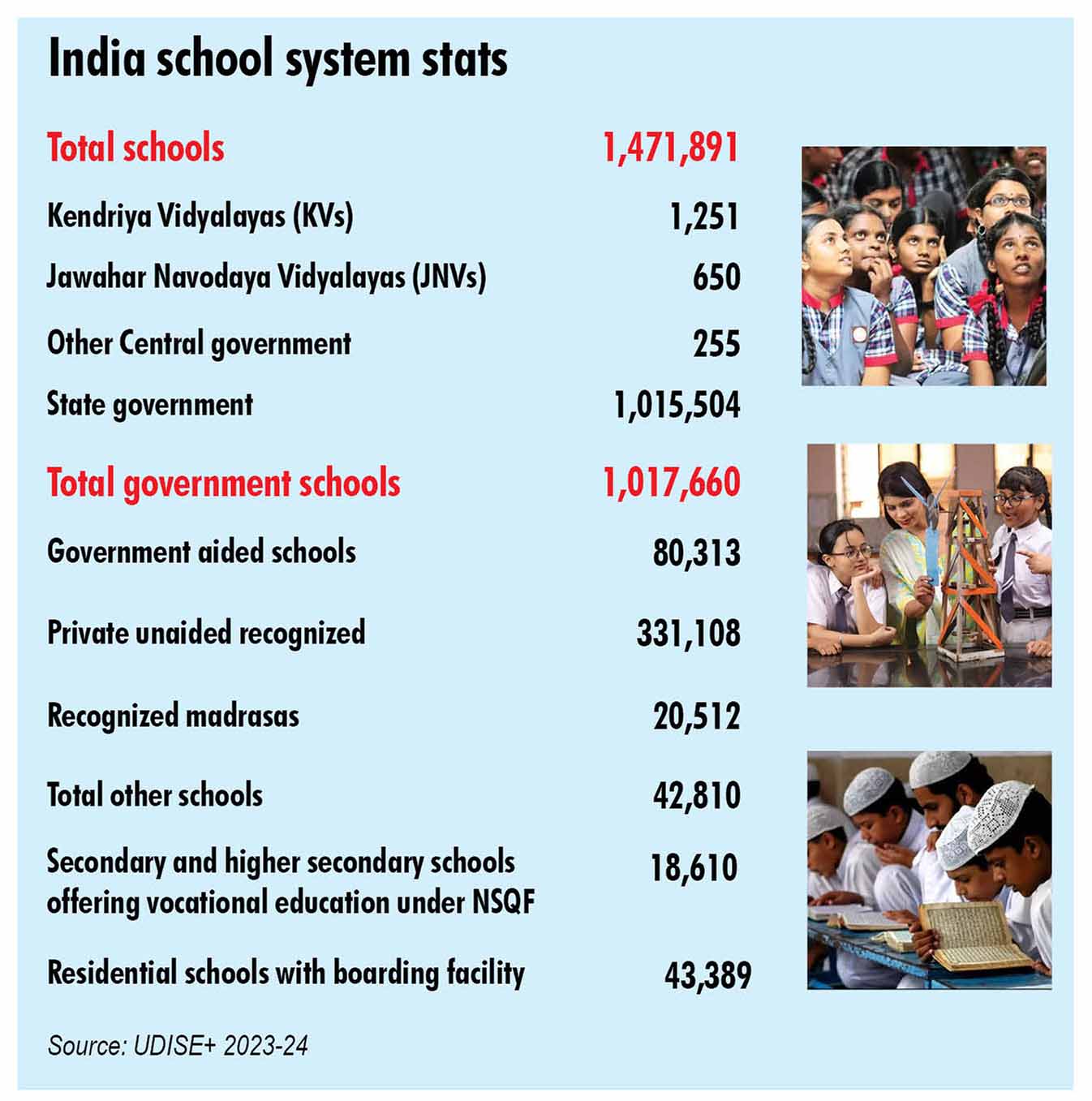 This recommendation (routinely endorsed by the election manifestos of all major political parties but never redeemed) has been supported every year by a unique EducationWorld schema/roadmap routinely presented to the Union government and the public. It shows the way for the Central government to mobilise additional Rs.7-8 lakh crore per year for investment in education and health (see www.educationworld.in, EW August 2024).
This recommendation (routinely endorsed by the election manifestos of all major political parties but never redeemed) has been supported every year by a unique EducationWorld schema/roadmap routinely presented to the Union government and the public. It shows the way for the Central government to mobilise additional Rs.7-8 lakh crore per year for investment in education and health (see www.educationworld.in, EW August 2024).
But your correspondent who has consistently been pressing for substantially larger government outlays for education has frequently been slapped down by establishment economists. “Inputs don’t guarantee outcomes” (V. Anantha Nageswaran, incumbent chief economic advisor to GOI). “Since the economy is growing at 7 percent per year, education expenditure even at 3.5 percent of GDP is increasing automatically” (Krishnamurthy Subramanian, former CEA) and “Expenditure efficiency rather than larger outlays is required in Indian education” (Swaminathan Aiyar, Economic Times editor emeritus).
Nevertheless citing the unique self-learning capabilities of India’s children and youth testified by Prof. Sugata Mitra’s ‘computer in the wall’ experiment in Kolkata (1999), and the rise and rise of several Indian cricket stars and sportspersons who have developed world-beating skills with minimal enablement, this writer has obstinately maintained that provided enabling school infrastructure and minimal institutional governance normative in Western and newly developed nations of Asia, India’s children will peer learn and self-educate notwithstanding poor quality teachers.
Therefore, investment in institutional infrastructure — conducive, well-planned schools equipped with digital classrooms, well-stocked libraries, modern laboratories, tinkering labs and clean, functional lavatories that attracts and excites children — is certain to enable millions of youth with the knowledge, skills and expertise to Make India Great Again.
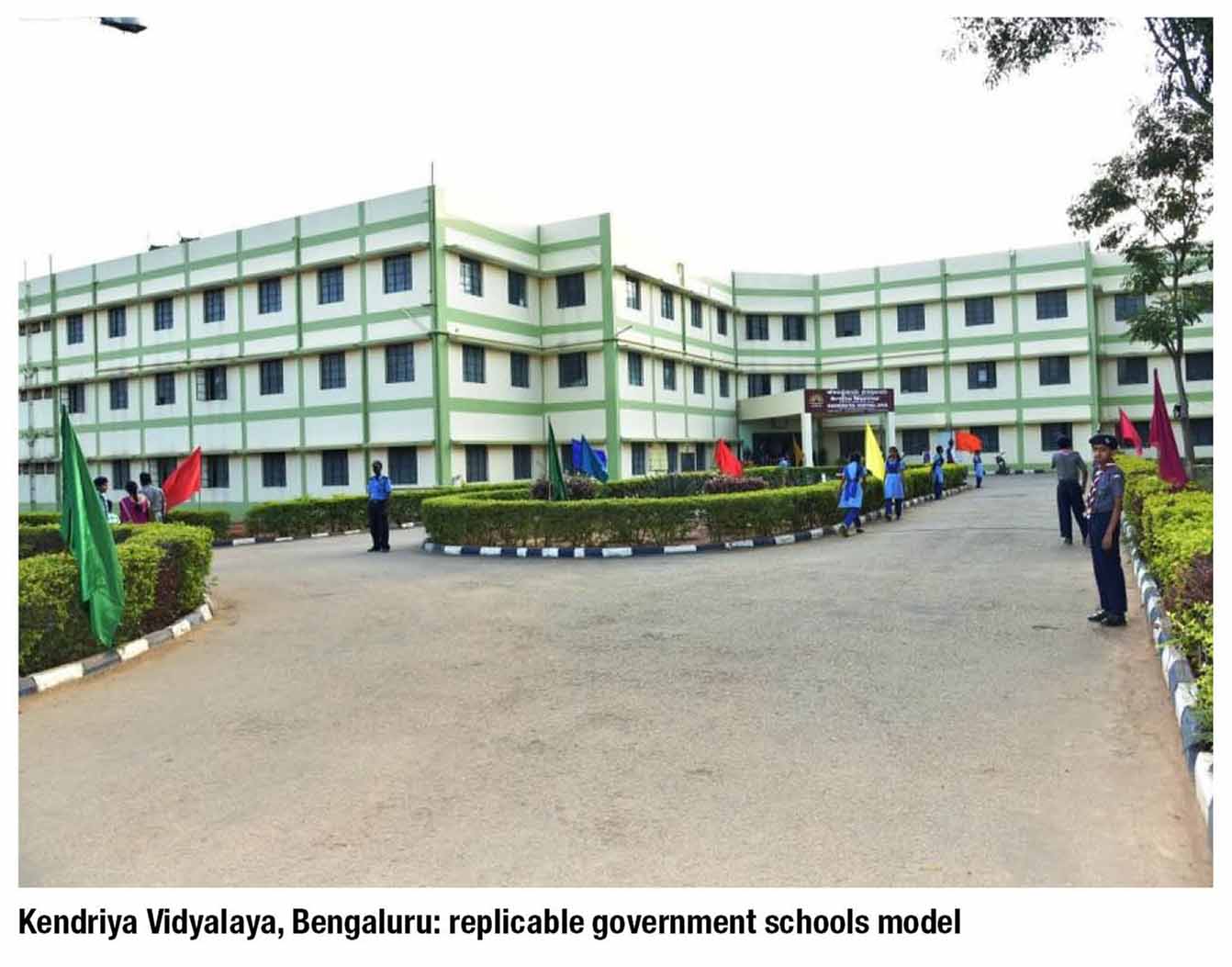 The great contribution to national development of the authors of UDISE+ 2023-24 is that perhaps unwittingly, they have highlighted the infrastructure deficit of India’s sliding school system. One hopes this report read with other constructive reports (ASER, NAS) will awaken and stimulate the complacent establishment and somnolent middle class to ideate ways and means to bankroll this ballooning problem. Further neglect will destroy the Viksit Bharat and $30 trillion GDP dreams set for year 2047 when India will celebrate its centenary of freedom from almost 200 years of foreign rule.
The great contribution to national development of the authors of UDISE+ 2023-24 is that perhaps unwittingly, they have highlighted the infrastructure deficit of India’s sliding school system. One hopes this report read with other constructive reports (ASER, NAS) will awaken and stimulate the complacent establishment and somnolent middle class to ideate ways and means to bankroll this ballooning problem. Further neglect will destroy the Viksit Bharat and $30 trillion GDP dreams set for year 2047 when India will celebrate its centenary of freedom from almost 200 years of foreign rule.
ASER 2024: Status Quo ante
As we go to press, the Pratham Education Foundation released its Annual Status of Education Report (ASER) 2024 (pertaining to 2023) on January 30. The report assesses the learning outcomes of 5-16 year-old children in basic reading (in their own vernacular languages) and arithmetic. To compile ASER 2024, 650,000 children in 605 rural districts across 26 states and two Union territories were tested by 25,557 Pratham volunteers (mainly college students and DIET officials).
The over-long closure of India’s schools during the Covid-19 pandemic (2020-21) averaging 82 weeks was stridently protested by EducationWorld (see.https://www.educationworld.in/why-indias-schools-should-reopen-right-now/) to no avail and the issue of remedial education has been substantially fudged.
Children’s learning outcomes as reported by ASER 2024 indicate that they have barely recovered to pre-pandemic levels.




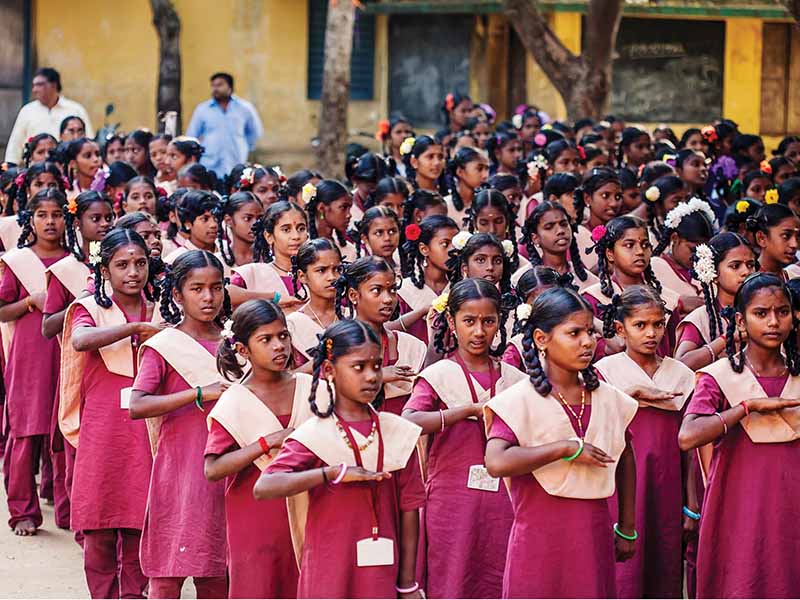

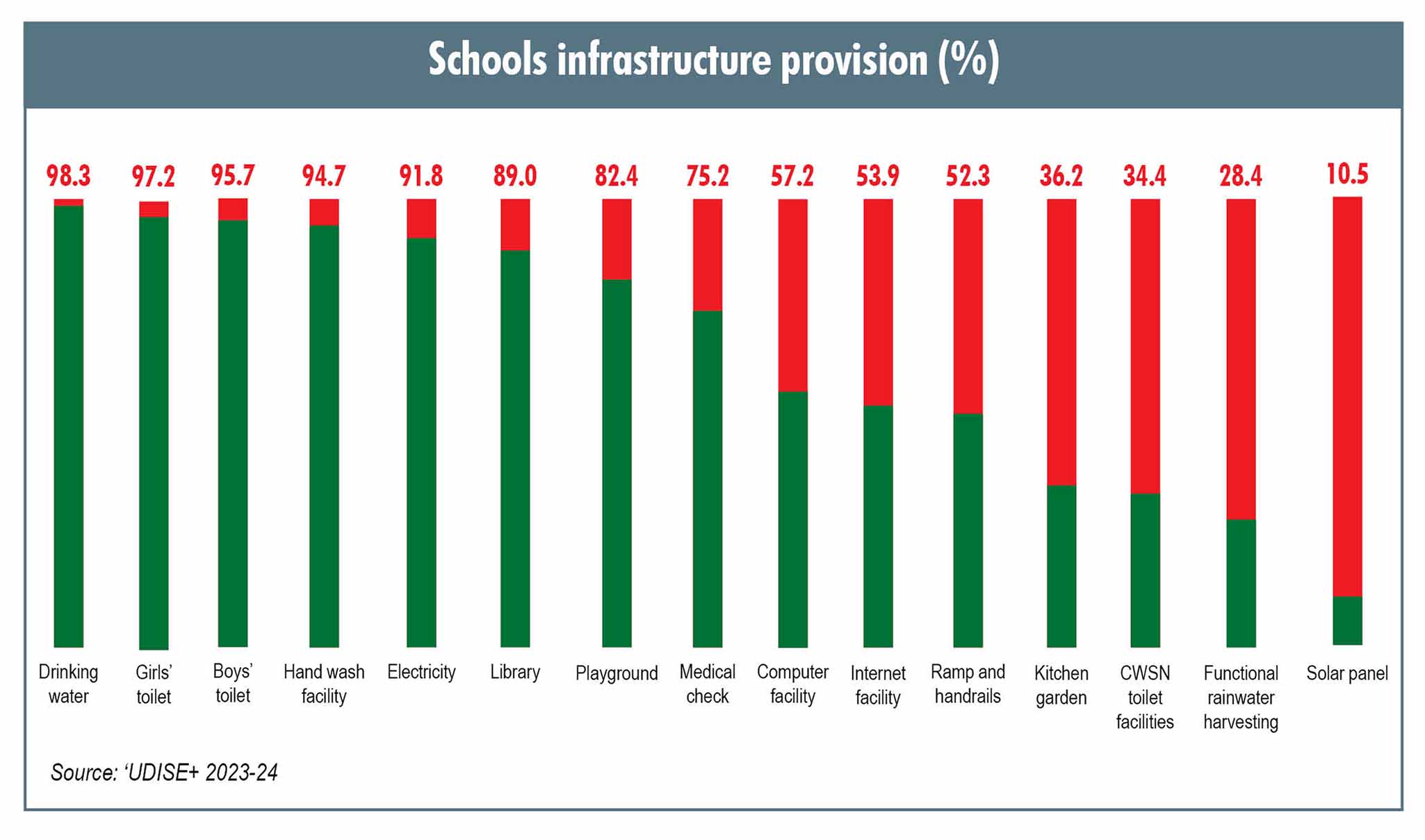
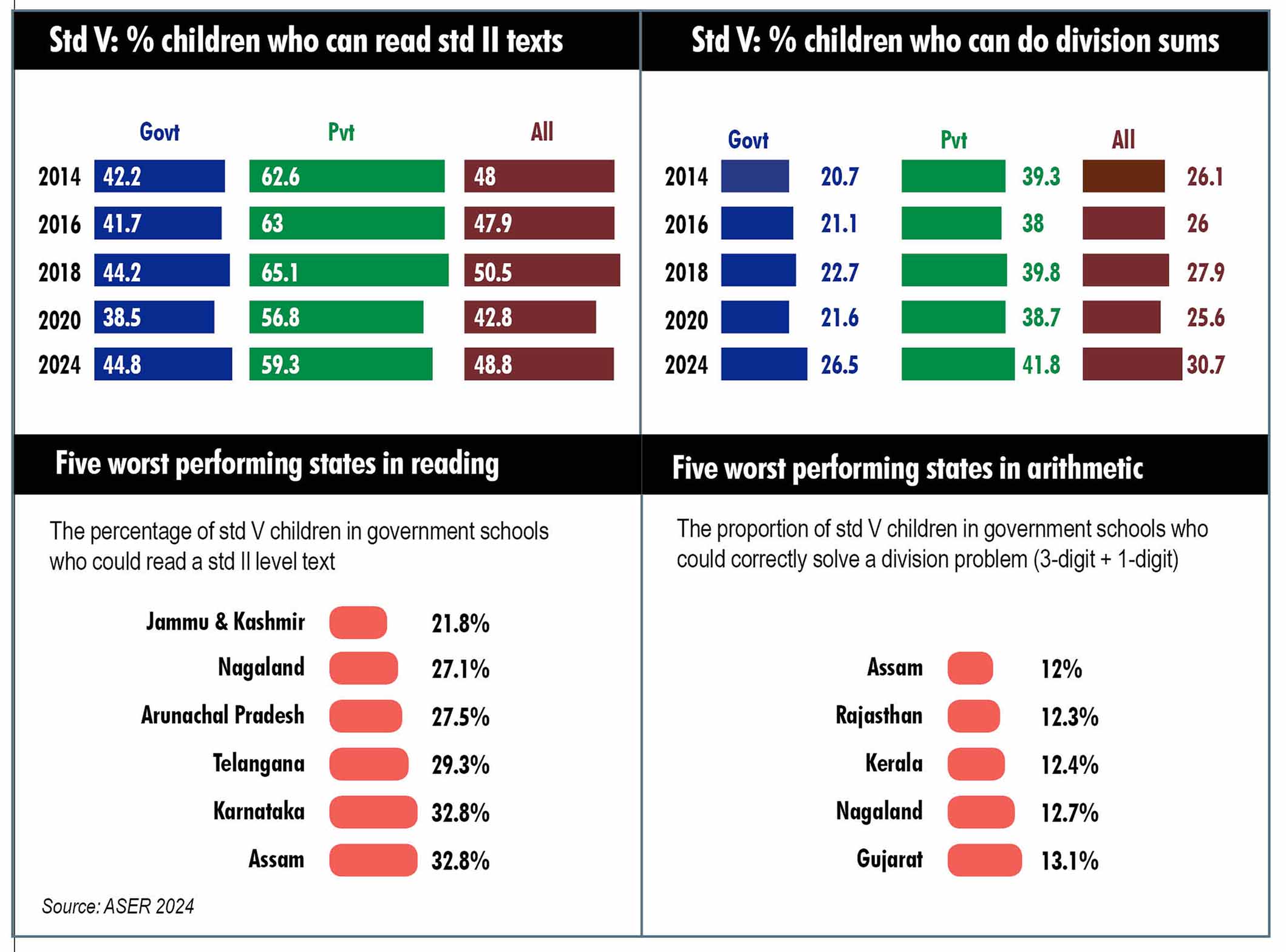


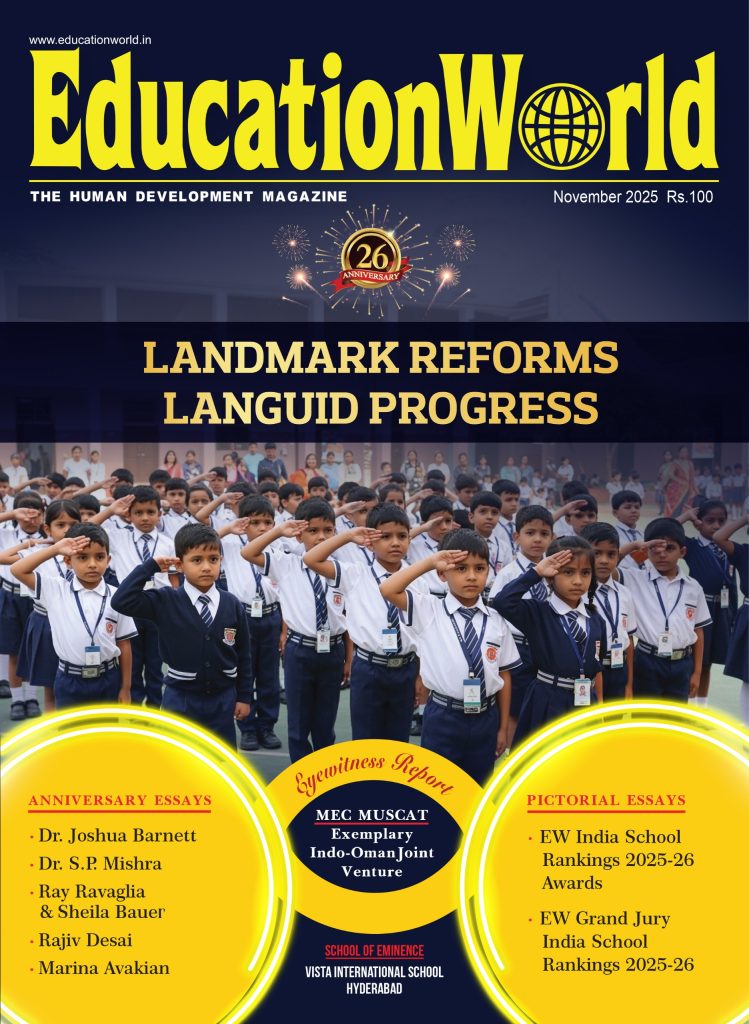




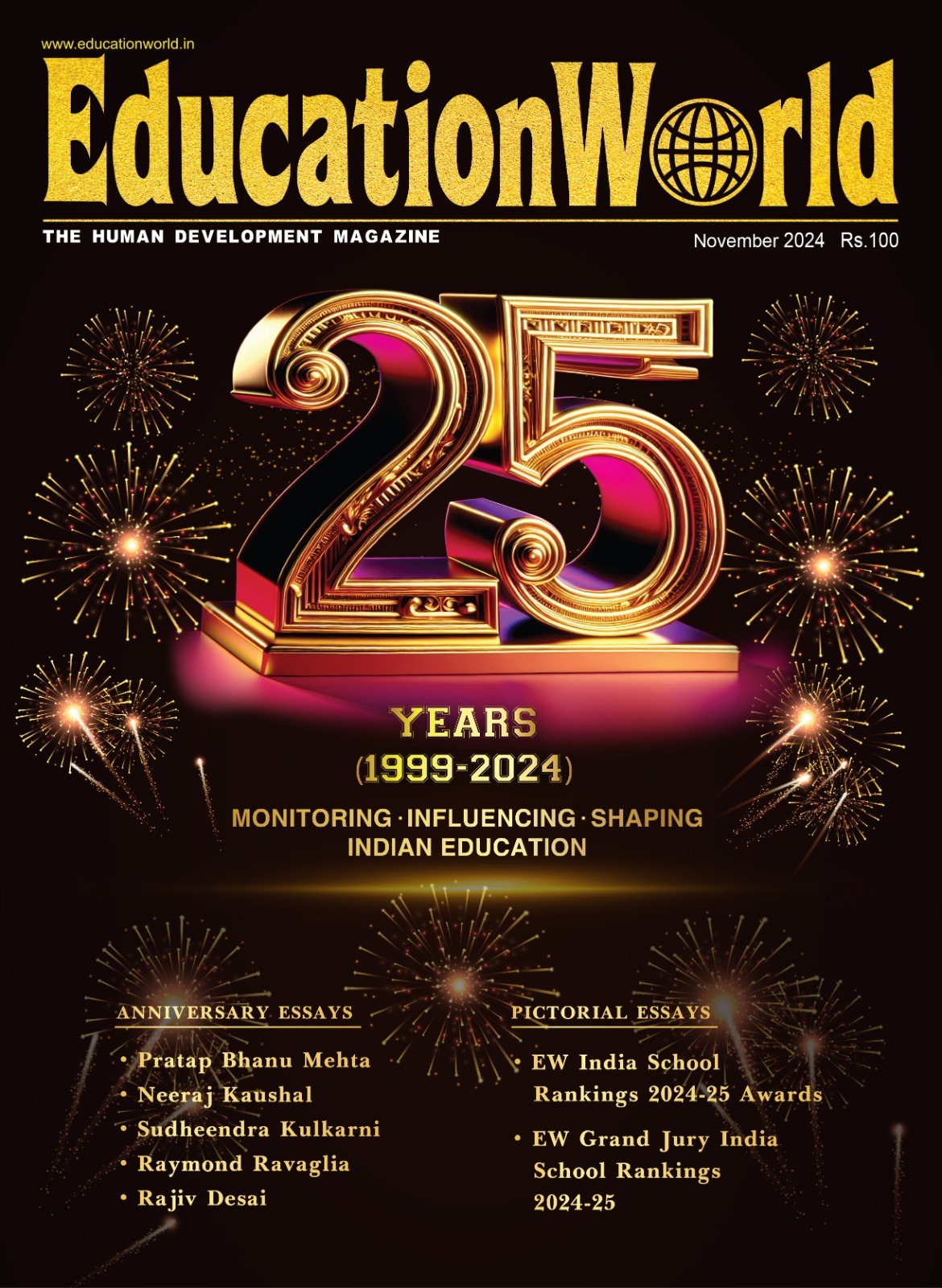



Add comment